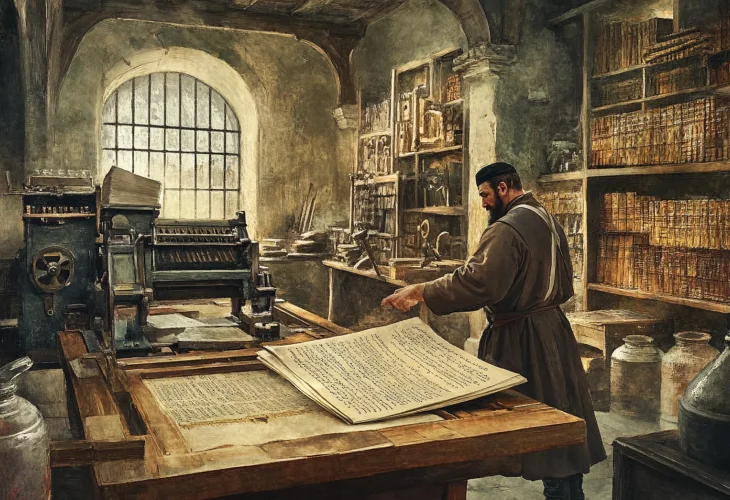The Christian Who Shaped the Talmud We Study Today
How Daniel Bomberg’s vision and dedication gave us the page layout we still use

Anyone who opens a volume of the Talmud instantly recognizes its familiar layout: the main text in the center of the page, surrounded by Rashi’s commentary on one side and Tosafot’s commentary on the other. This format has been the standard in every edition of the Babylonian Talmud for centuries. But surprisingly, the person who created this layout was not a rabbi, not a yeshiva student, and not even Jewish.
Daniel Bomberg worked tirelessly day and night, traveling from place to place, consulting with rabbis, designing printing plates, and investing a fortune into a project he believed would change the Jewish world forever. Without his monumental efforts, the Talmud as we know it today might never have taken its current form.
Born in the late 15th century in Antwerp, in the region of Flanders (modern-day Belgium), Bomberg grew up in a thriving Christian family. His early life was filled with commerce, art, and exposure to the printing industry, which at that time was a revolutionary new technology. Drawn to the world of books, he eventually moved to Venice, then Europe’s leading center for printing.
It was in Venice that Bomberg encountered the Jewish world through its scholars, many of them refugees from Spain and Portugal after the expulsion, while others came from Ashkenaz (Germany and northern France) and Italy. The Jewish community there was both intellectually vibrant and under pressure from the authorities. Bomberg, though Christian, was deeply curious about their culture and fascinated by the richness and depth of their sacred texts. Through his friendships with Jewish scholars, he came to understand that these were not just ancient writings, but a living, breathing system of study and debate that connected generations.
Up until that time, the Talmud existed only in handwritten manuscripts, each one copied slowly and painstakingly. This made them rare and extremely expensive, available only to a small number of people. Bomberg saw that printing could change everything, making the Talmud more affordable, more widely available, and able to reach Jewish communities across Europe.
Printing the Talmud, however, was far from simple. The technical challenge alone was enormous: hundreds of densely written pages in Hebrew and Aramaic had to be set in type and printed clearly. Even more difficult were the political and religious barriers. Many Christian authorities in Venice opposed the idea of printing Jewish texts. Yet Bomberg’s strong personal connections with government and church officials allowed him to secure something extraordinary for that time, a rare official permit to print the Talmud.
Bomberg didn’t just want to produce a basic printed version. His vision was to create an edition so well-organized that it would set the standard for all future generations. He brought together a team of leading Jewish scholars to carefully edit the text and arrange it in a way that made study easier and more structured. Together, they developed the groundbreaking page layout still used today: the central Talmud text, with Rashi’s commentary on the inside margin and Tosafot on the outside margin. This arrangement allowed students to see the main discussion and the key commentaries all at once, a design so effective that it remains unchanged in yeshivas worldwide.
To make this possible, Bomberg invested in advanced printing technology, specially designed Hebrew typefaces, and high-quality paper. Every page was checked and corrected repeatedly until it reached perfection. The printing shop worked around the clock, with meticulous attention to detail. This was one of the most expensive printing projects of its era, and Bomberg poured an immense portion of his wealth into it.
Between 1520 and 1523, the first complete printed edition of the Babylonian Talmud came off Bomberg’s presses. It was an immediate success. Jewish communities across Europe eagerly obtained copies, and for the first time in history, the Talmud was no longer limited to a small circle of scribes and it was now a fixture in study halls and homes.
Although he was not Jewish, Daniel Bomberg devoted much of his life to making the Jewish bookshelf accessible on a scale never before possible. His edition of the Talmud became a foundation of Jewish learning, and the page format he designed remains the standard to this day. Without his dedication and vision, the Talmud might look and be studied very differently.

